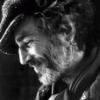Florin Curta. Avar Blitzkrieg , Slavic and Bulgar Raiders, and Roman Special Ops: Mobile Warriors in the 6 th -Century Balkans С. 79-85.
Цитата
The first Sclavene raid took place in 545, when the marauders were intercepted by the Herulian mercenaries under the command of Narses. Three years later, another raid reached as far as Dyrrachium, in Epirus Nova. Those were most likely Sclavene horsemen, for Procopius calls them an “army” (strateuma). This is further confirmed by the speed at which they moved over more than 400 km separating the Lower Danube from the coast of the Ionian Sea. It seems to have been a large army, as the military commanders of Illyricum followed it at a distance with a force of 15,000 (horse) men, without getting too close or engaging in any battle. In the summer of 550, as Roman troops were gathering in Serdica under the command of Germanus in order to be sent to Italy against Totila, a great throng of Sclavenes, “such as never before was known” crossed the Danube and easily came close to Naissus (present-day Niš). Procopius calls them a “throng” (homilos), but also an “army” (stratos), and claims that the raiders’ goal was nothing less than taking Thessalonica. Their intentions blocked by Germanus’ troops, they crossed the mountains into Dalmatia, a sign that the marauders were on horseback. In 581, “the accursed people of the Slavs” set out and plundered all of Greece, the region around Thessalonica, and Thrace, taking many towns and castles, laying waste, burning, pillaging, and seizing the whole country. That those Slavs must have also been horsemen results not only from the great distance at which they operated, away from the Lower Danube frontier of the Empire, but also from the fact that, according to John of Ephesus, over the course of the following years, they came to possess “herds of horses and a lot of weapons, and learned to make war better than the Romans.” Some of them, 5,000 in number according to the author of the first collection of homilies in the Miracles of St. Demetrius, attacked Thessalonica by surprise; they were “the flower of the Sclavene nation,” which strongly suggests “professional” warriors who must have learned how to make war “better than the Romans” long before the raid of 581. As late as 593, while the Roman armies were operating deep into the Sclavene territory on the other side of the river Danube, there were still marauding parties in the Balkans. One of them ambushed a Roman convoy going to Constantinople with a great number of Sclavenes captured north of the Danube. Only the intervention of Roman infantry troops stationed in the environs saved the convoy and its commander from being completely annihilated. Judging from the emphasis Theophylact places on the role of the infantry and the fact that the Sclavenes attacked the convoy while its members were “encamped carelessly and at ease, and horses were grazing the grass,” the marauders seem to have been on horseback. There is, however, a conspicuous contrast between Theophylact Simocatta and the Strategikon. While the latter completely ignores the Sclavene cavalry, the former knew about its existence and use. For example, when in 594, general Peter sent twenty men across the river Danube to reconnoiter, they were all captured by Sclavene horsemen. The soldiers who were sent after them defeated the Sclavene warriors led by a warlord named Peiragastus, managed to kill him, but were unable to pursue the enemy, “because of their lack of horse.” This implies that Peiragastus’ warriors were on horseback. When hunted down by Priscus’ men in 593, Ardagastus, the Sclavene warlord defeated in 585 near Adrianople, escaped on “an unsaddled mare” which he dismounted when engaging in hand-to-hand combat with his pursuers, before taking to flight and swimming across a river into the “rough country.” A possible explanation for the contradiction between Theophylact Simocatta and the Strategikon may result from an examination of Procopius of Caesarea’s work. Despite labeling various raiding Sclavene groups with a word he more often than not employed for cavalry troops, Procopius shared with the author of the Strategikon the idea that the Sclavenes only fought on foot: “When they enter battle, the majority of them go against their enemy on foot carrying little shields and javelins in their hands, but they never wear corselets. Indeed, some of them do not wear even a shirt or a cloak, but gathering their trews up as far as to their private parts they enter into battle with their opponents.” That almost the same is said about the barbarian soldiers fighting in Belisarius’ army suggests that responsible for Procopius’ inconsistencies was his desire to portray the Sclavenes as quintessential barbarians. They had no knowledge of horse riding, no armor, and no sophisticated weapons. Until their conquest of Topeiros, they had no use of their prisoners, whom they killed in the most atrocious way, behaving more like beasts than like humans. Their many raids and victories against Roman armies may thus have appeared as extraordinary to Procopius’ audience, the members of which shared his stereotypical views about barbarians.
Пересказ: Первый склавинский рейд состоялся в 545 г., когда разбойники были перехвачены герульскими наемниками под командованием Нарсеса. Три года спустя, еще один рейд достиг Диррахия в Новом Эпире. Вполне возможно, это были склавинские всадники, поскольку Прокопий называет их «армия» (strateuma). Это подтверждается и той скоростью, с которой они пересекли более чем 400 км, отделяющих Нижний Дунай от побережья Ионического моря. Это, кажется, было большое войско, так как военные командиры Иллирии следовали за ним на расстоянии без попытки сблизиться и дать битву, хотя располагали силами в 15000 всадников (15,000 (horse) men). Летом 550 г., когда римские войска собрались в Сердике под командованием Германа чтобы быть отправлены в Италию против Тотилы, большая толпа склавинов, «такая, какая никогда не была известна ранее», перешла Дунай и легко приблизилась к Naissus (ныне Ниш). Прокопий называет их и «толпа» (homilos), но и «армия» (stratos), и утверждает, что цель рейдеров была не меньше, чем взять Фессалоники. Их намерения были пресечены войсками Германа, они пересекают горы в Далмации, и это возможно свидетельство, что разбойники были на лошадях. В 581 г. «проклятые славяне» разграбили всю Грецию, область вокруг Фессалоники, и Фракию, захватив многие города и замки, уничтожая, сжигая, грабя и, захватив всю страну. То, что эти славяне также должны были быть всадниками следует не только из того факта, что они действовали вдалеке от нижнедунайского фронтира империи, но также из-за того, что, согласно Иоанну Эфесскому, в течение следующих лет они завели «табуны лошадей и много оружия, и научились воевать лучше, чем римляне». Некоторые из них, в количестве 5000 согласно автору первого сборника проповедей в «Чудесах святого Димитрия», неожиданно атаковали Фессалоники; они были «цветом склавинской нации», что наводит на мысль о профессиональных воинах, которые должны были научиться вести войну «лучше, чем римляне» задолго до рейда 581 г. Даже в 593 г., в то время как римские войска действовали в глубине территории склавинов на другой стороне Дуная, партии разбойников действовали на Балканах. Одна из них устроила засаду на римский конвой, двигавшийся на Константинополь с большим количеством склавинов, захваченных к северу от Дуная. Только вмешательство римских пехотных войск, дислоцированных в окрестностях, спасло конвой и его командира от полного уничтожения. Судя по тому, что Феофилакт подчеркивает роль пехоты и тому, что склавины напали на конвой, когда римляне «расположились лагерем беспечно, и лошади паслись на траве» разбойники, кажется, были конными. Бросается в глаза контраст между Феофилактом Симокаттой и Стратегиконом. В то время как последний полностью игнорирует кавалерию склавинов, первый знает о ее существовании и использовании. Например, когда в 594 г., военачальник Петр послал двадцать человек через реку Дунай на разведку, все они были захвачены склавинскими всадниками. Солдаты, которые были отправлены после нанесли поражение склавинам во главе с военачальником по имени Пейрагаст, им удалось убить его, но они не смогли преследовать противника «из-за отсутствия лошадей». Это предполагает, что воины Пейрагаста были на лошадях. Когда партия охотников Приска действовала против склавинов в 593 г., Ардагаст, военачальник склавинов, потерпевший поражение в 585 г. возле Адрианополя, бежал на «расседланой кобыле», с которой он спешился, чтобы принять участие в рукопашном бое с его преследователями, прежде чем прорваться к Дунаю, направляясь в «страну варваров». Возможное объяснение противоречия между сведениями Феофилакта Симокатты и Стратегикона можно вывести из рассмотрения трудов Прокопия Кесарийского. Несмотря на маркировку групп склавинских рейдеров тем словом, которым он обычно пользуется для кавалерийских войск, Прокопий разделяет с автором Стратегикона идею, что склавины сражаются только пешими: «Вступая же в битву, большинство идет на врагов пешими, имея небольшие щиты и копья в руках, панциря же никогда на себя не надевают; некоторые же не имеют [на себе] ни хитона, ни [грубого] плаща, но, приспособив только штаны, прикрывающие срамные части, так и вступают в схватку с врагами». Поскольку это почти то же самое, что он говорит о варварах, воюющих в армии Велизария, можно предположить, что ответственность за противоречия у Прокопия лежит на его желании изобразить склавинов квинтэссенцией варваров. Они не знают верховой езды, не имеют брони, и не владеют современным оружием. До завоевания Topeiros, они не использовали пленных, которых убивали самым зверском образом и вели себя больше как звери, чем как люди. Их многочисленные рейды и победы над римскими армиями, таким образом, казались аудитории Прокопия, разделявшей его стереотипные представления о варварах, чем-то экстраординарным.
Сообщение изменено: альбинос в черном, 12 Июль 2015 - 10:27.
 Вход
Вход Зарегистрироваться
Зарегистрироваться




 Наверх
Наверх






